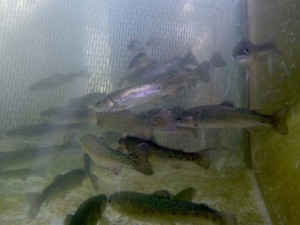With wingspans of six feet prominent in the clear early fall sky, turkey vultures are paying their annual migratory visit to Auburn.
On their way from areas in an around Washington State to final wintering destinations as far south as Brazil and Argentina, the majestic birds typically hunker down in the evenings in the American River Canyon and then take off in a swirl of feathers and flight to soar farther southward.
This year, the birds have flocked to Auburn in the hundreds, according to counts taken over the past week, mostly from a lookout knoll at Overlook Park in Auburn.
Deren Ross, an Auburn birdwatcher, has been one of the group of spotters scanning the skies above Auburn from the Pacific Avenue park perch in late morning to count the vultures.
The count was up to 950 winged visitors by Tuesday, with 500 migrant turkey vultures spotted on Monday and 400 on Sunday. That was up from 40 on Saturday and another down day on Tuesday with no “kettles” of birds circling skyward and then taking off to the south.
Watchers spotted several vultures on Tuesday morning’s vigil but no confirmed migrants. Ross said that the skyway takes vultures through the Sacramento Valley and then left at the Sutter Buttes to move through Auburn for the turn south into the Sierra and toward Central America.
More at AuburnJournal.com >>>

